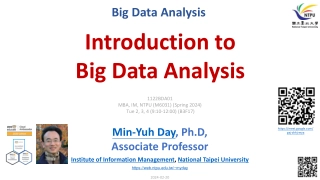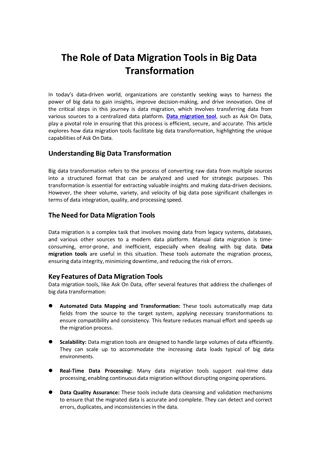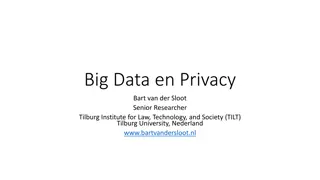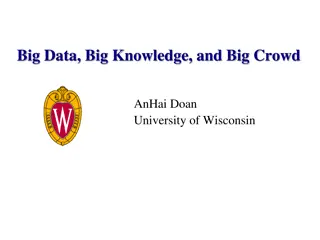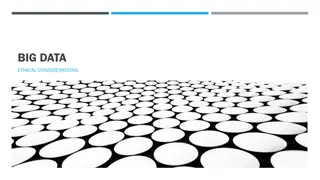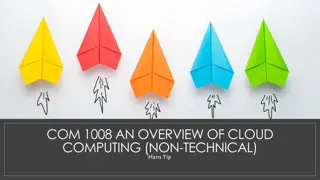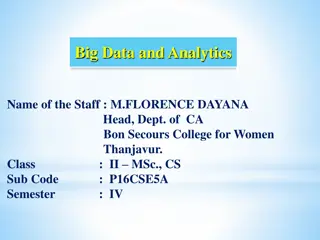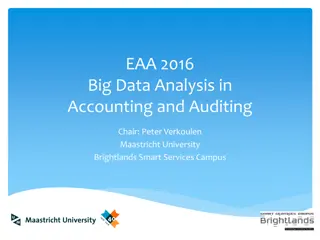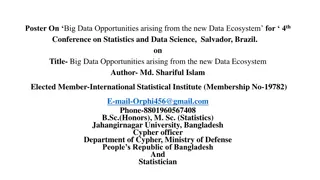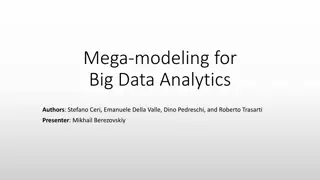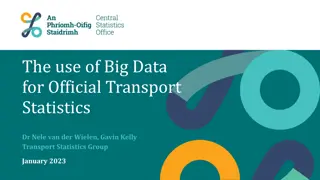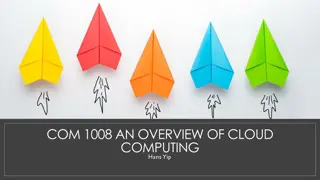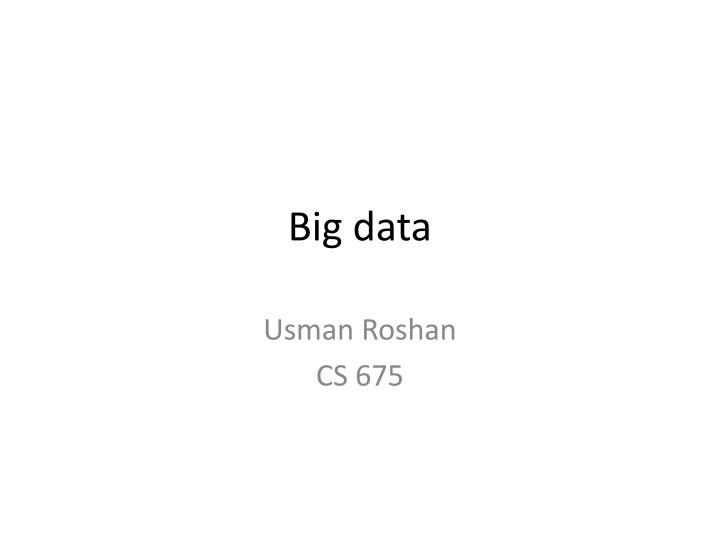
Solving Big Data Challenges Through Parallel Computing
Learn how to tackle big data issues with parallel computing techniques like divide and conquer, distributed computing, and stochastic gradient descent. Explore the impact of big data on machine learning and examples of relevant applications. Dive into parallel computing methods such as multi-core programming and GPU programming to harness the power of massive datasets efficiently.
Download Presentation

Please find below an Image/Link to download the presentation.
The content on the website is provided AS IS for your information and personal use only. It may not be sold, licensed, or shared on other websites without obtaining consent from the author. If you encounter any issues during the download, it is possible that the publisher has removed the file from their server.
You are allowed to download the files provided on this website for personal or commercial use, subject to the condition that they are used lawfully. All files are the property of their respective owners.
The content on the website is provided AS IS for your information and personal use only. It may not be sold, licensed, or shared on other websites without obtaining consent from the author.
E N D
Presentation Transcript
Big data Usman Roshan CS 675
Big data Typically refers to datasets with very large number of instances (rows) as opposed to attributes (columns). Data with high columns is referred to as high dimensional Big dataset in many places Genomics: DNA sequences, millions of species Image recognition: internet, public cameras Business: security, advertising, marketing
How to solve big data problems? Parallel computing This field has existed before big data came around Divide and conquer: divide the problem into smaller subsets, solve each component in parallel, merge to form one solution Distributed computing Run same problem on multiple instances of the input Reduce input size Stochastic gradient descent Mini-batch
Big data in machine learning Some machine learning programs take a long time to finish. For example large neural networks and kernel methods. Dataset sizes are getting larger. While linear classification and regression programs are generally very fast they can be slow on large datasets.
Examples Dot product evaluation Gradient descent algorithms Cross-validation Evaluating many folds in parallel Parameter estimation http://www.nvidia.com/object/data-science- analytics-database.html
Parallel computing Multi-core programming OpenMP: ideal for running same program on different inputs MPI: master slave setup that allows message passing Graphics Processing Units: Equipped with hundred to thousand cores Designed for running in parallel hundreds of short functions called threads
GPU programming Memory has four types with different sizes and access times Global: largest, ranges from 3 to 6GB, slow access time Local: same as global but specific to a thread Shared: on-chip, fastest, and limited to threads in a block Constant: cached global memory and accessible by all threads Coalescent memory access is key to fast GPU programs. Main idea is that consecutive threads access consecutive memory locations.
GPU programming Designed for running in parallel hundreds of short functions called threads Threads are organized into blocks which are in turn organized into grids Ideal for running the same function on millions of different inputs
Languages CUDA: C-like language introduced by NVIDIA CUDA programs run only on NVIDIA GPUs OpenCL: OpenCL programs run on all GPUs Same as C Requires no special compiler except for opencl header and object files (both easily available)
GPU programs GPU speedup for eigenvector computation speeds up PCA and other dimensionality reduction algorithms. Supported by NVIDIA Problem specific solutions Our work MaxSSmap Chi8
MaxSSmap Comparing a short DNA sequence to a much large whole genome sequence.
Chi8 Univariate feature selection is fast even for a million features But bivariate can be much slower. For example a dataset with m columns requires m choose 2 bivariate tests In Chi8 we use a GPU to run bivariate tests in parallel Requires cleverly storing the data in GPU memory
Chi8 Running times on real data
Distributed computing Systems for distributed computing have existed for many years Examples: Sun scheduler for cluster computing Condor for running programs on idle public computers Mapreduce from LISP Recently we have Hadoop that is an open source implementation of Mapreduce Hadoop is increasing in popularity and is used by industry
Stochastic gradient descent Instead of using all the datapoints to compute the gradient we take a random subset (or just one point) For example least squares gradient search - f = ((yi-wTxi)xi1,(yi-wTxi)xi2) i w = w+h(- f) In stochastic gradient descent we would select one point or a subset to compute the gradient. In practice leads to great speed-ups without much loss in accuracy
Mini-batch methods Popular in k-means clustering Main idea: select a random (small) subset of the input data as opposed to the full dataset Compute clustering Assign remaining points to their clusters by the centroids

